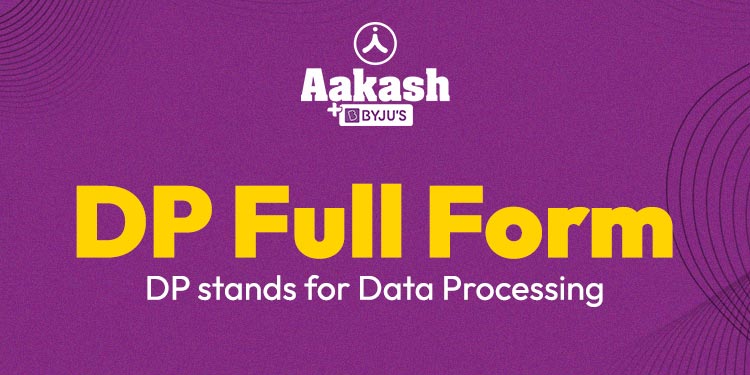What is Full Form of DP?
DP Full Form: DP stands for Data Processing – Data processing (DP) is a fundamental concept in the world of technology and information systems. It involves transforming raw data into meaningful information through various stages of collection, storage, organization, analysis, and presentation. In today’s data-driven era, data processing plays a vital role in enabling organizations to extract valuable insights, make informed decisions, and drive innovation. This article explores the concept of data processing, its significance, methods, applications, and challenges faced in this field.
Understanding Data Processing
Data processing refers to the manipulation and transformation of data into a more usable format. It involves converting raw data into meaningful information that can be analyzed, interpreted, and utilized for various purposes. Data processing encompasses a series of stages, including data collection, data entry, data validation, data cleaning, data transformation, data analysis, and data presentation.
Significance of Data Processing
Data processing holds immense importance across various industries and domains. Here are some key reasons why data processing is crucial:
1. Decision Making: Data processing enables organizations to make informed decisions based on accurate and relevant information. By processing data, organizations can identify patterns, trends, and correlations that provide valuable insights for strategic planning and decision-making.
2. Efficiency and Productivity: Effective data processing streamlines operations, reduces manual effort, and improves overall efficiency. It enables automation, accelerates processes, and minimizes errors, allowing organizations to save time, resources, and costs.
3. Business Intelligence: Data processing plays a pivotal role in generating business intelligence. By analyzing and processing data, organizations can gain actionable insights into customer behavior, market trends, and operational performance. These insights drive effective business strategies and help organizations stay ahead of the competition.
4. Innovation and Growth: Data processing fuels innovation by uncovering new opportunities and enabling organizations to adapt and evolve. By processing and analyzing data, organizations can identify customer needs, develop new products or services, and enhance existing offerings based on data-driven insights.
Methods of Data Processing
Data processing can be performed using various methods, depending on the nature of the data and the desired outcomes. Here are some common methods of data processing:
1. Batch Processing: Batch processing involves processing a large volume of data as a batch or group. It is typically used for non-real-time applications, where data is collected over a period and processed in a scheduled manner. Batch processing is efficient for tasks such as data backup, report generation, and data integration.
2. Real-time Processing: Real-time data processing involves processing data as it arrives, enabling immediate analysis and action. This method is employed when instant responses or continuous monitoring is required. Real-time processing is crucial in applications such as stock trading, fraud detection, and online customer support.
3. Online Transaction Processing (OLTP): OLTP focuses on processing transactional data in real-time. It is commonly used in systems that handle frequent, small-sized transactions, such as e-commerce platforms, banking systems, and reservation systems. OLTP ensures data integrity, concurrency control, and transaction management.
4. Online Analytical Processing (OLAP): OLAP involves processing data for analytical purposes, enabling users to perform multidimensional analysis and gain insights. OLAP is used for tasks such as data mining, business intelligence, and decision support. It enables organizations to explore data from different dimensions, drill down into details, and generate meaningful reports and visualizations.
Applications of Data Processing
Data processing has a wide range of applications across various industries and domains. Some notable applications include:
1. Business and Marketing: Data processing empowers businesses to analyze customer behavior, market trends, and sales patterns. It enables targeted marketing campaigns, personalized customer experiences, and predictive analytics for improved business outcomes.
2. Healthcare: Data processing plays a significant role in managing electronic health records, patient information, and medical research. It helps in diagnosing diseases, monitoring patient health, and improving healthcare outcomes through data-driven decision-making.
3. Finance and Banking: Data processing is essential for financial institutions to process transactions, detect fraudulent activities, and assess creditworthiness. It supports risk management, financial modeling, and regulatory compliance in the banking sector.
4. Manufacturing and Supply Chain: Data processing optimizes manufacturing processes, supply chain management, and inventory control. It enables predictive maintenance, quality control, and demand forecasting for efficient operations.
Challenges and Considerations
While data processing offers immense benefits, it also poses certain challenges and considerations. Organizations need to address factors such as data quality, data security, scalability, and compliance with privacy regulations. Additionally, the increasing volume, velocity, and variety of data present challenges for efficient data processing and storage. Organizations must invest in robust infrastructure, data governance practices, and data processing tools to overcome these challenges.
Conclusion:
Data processing is a cornerstone of modern information systems, enabling organizations to extract valuable insights, make informed decisions, and drive innovation. It empowers businesses across various industries to harness the power of data and transform it into actionable information. With the advancements in technology and the increasing availability of data, the significance of data processing continues to grow. Embracing effective data processing techniques and leveraging the power of data will be key to success in today’s data-driven world.
Full Form List
| OBC Full Form | EVS Full Form |
| OTT Full Form | IG Full Form |
| DM Full Form | JEE Full Form |
| CMO Full Form | EOD Full Form |
| MMS Full Form | NASA Full Form |
DP FAQs
[wp-faq-schema]













